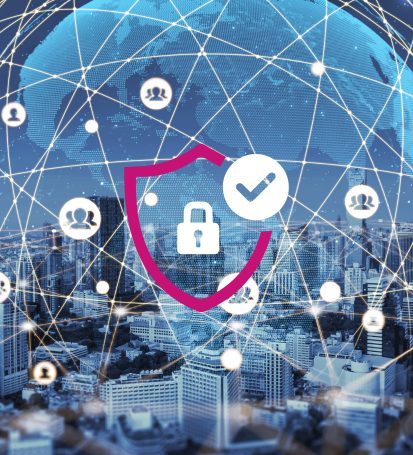In the fast-paced world of e-commerce, where transactions happen at the click of a button, security is of paramount importance. As businesses and consumers engage in a digital marketplace, safeguarding sensitive information becomes a critical aspect of maintaining trust and ensuring the longevity of e-commerce operations. This blog post explores the essential security measures that businesses should implement to protect both their operations and, most importantly, their valued customers.
- SSL Encryption for Secure Transactions:
Secure Sockets Layer (SSL) encryption is the backbone of secure e-commerce. By encrypting the data exchanged between a customer’s browser and the e-commerce website, SSL ensures that sensitive information, such as credit card details, remains confidential. A visible “https://” and a padlock symbol in the browser address bar indicate a secure connection, instilling confidence in customers.
- Two-Factor Authentication (2FA):
Adding an extra layer of authentication beyond passwords significantly enhances security. Implementing 2FA ensures that even if login credentials are compromised, unauthorized access is thwarted without the second form of verification. This added security measure is crucial for protecting both customer accounts and internal systems.
- Regular Software Updates and Patch Management:
Outdated software is a vulnerability that cybercriminals often exploit. E-commerce platforms and associated software should be regularly updated to patch security vulnerabilities. Automated patch management systems can streamline the process, ensuring that the latest security updates are applied promptly.
- Robust Password Policies:
Weak passwords are an open invitation to cyber threats. E-commerce businesses must enforce strong password policies for both customers and employees. This includes requiring a combination of uppercase and lowercase letters, numbers, and special characters. Regular password updates and educating users on password best practices are also crucial.
- Secure Payment Gateways:
The backbone of any e-commerce operation is its payment gateway. Choosing a reputable and secure payment gateway is non-negotiable. It should comply with industry standards, encrypt payment data, and provide fraud detection mechanisms to ensure the financial security of both the business and its customers.
- Data Backups and Recovery Plans:
In the event of a security breach or a system failure, having regular data backups is a lifesaver. E-commerce businesses should implement robust backup procedures and establish recovery plans to minimize downtime and data loss. Regularly testing these procedures ensures they are effective when needed.
- Employee Training on Security Awareness:
Employees are often the first line of defense against security threats. Training staff members on security best practices, recognizing phishing attempts, and fostering a security-conscious culture within the organization are essential components of a comprehensive security strategy.
Further since E-commerce security is a multifaceted challenge, and the more comprehensive your approach, the better protected your business and customers will be.
Here are a few additional points emphasizing security aspects:
- Regular Security Audits and Vulnerability Assessments:
Conducting regular security audits and vulnerability assessments is crucial for identifying and addressing potential weaknesses in your e-commerce infrastructure. By proactively seeking vulnerabilities, businesses can stay one step ahead of potential cyber threats, ensuring a robust and secure environment for transactions.
- Firewall Protection:
Implementing a robust firewall is fundamental to safeguarding your e-commerce platform from unauthorized access and malicious attacks. Firewalls monitor and control incoming and outgoing network traffic, acting as a barrier between your internal network and the vast realm of the internet.
- Secure File Transfer Protocols:
When handling sensitive customer information or transferring files internally, using secure file transfer protocols, such as SFTP (Secure File Transfer Protocol), adds an additional layer of protection. This ensures that data in transit is encrypted, preventing interception by unauthorized parties.
- Incident Response Plan:
No security system is foolproof, and having an incident response plan is essential for mitigating the impact of a security breach. This plan should outline the steps to be taken in the event of a security incident, including communication strategies, containment measures, and steps for recovery.
- Customer Education on Security Practices:
Empowering your customers with knowledge about security best practices can contribute significantly to overall e-commerce security. Provide resources on your website or through newsletters that educate users on recognizing phishing attempts, creating strong passwords, and being vigilant about the security of their personal information.
- Geofencing and IP Blocking:
Implementing geofencing and IP blocking can add an extra layer of security by restricting access to your e-commerce platform from specific geographic regions or suspicious IP addresses. This can help prevent unauthorized access and potential security threats originating from specific locations.
- Secure APIs and Third-Party Integrations:
If your e-commerce platform utilizes third-party integrations or APIs (Application Programming Interfaces), ensuring their security is paramount. Regularly update and monitor these integrations, verifying that they comply with security standards to prevent potential vulnerabilities in your system.
- Legal Compliance and Data Protection:
Adhering to legal requirements, such as GDPR or other regional data protection laws, is critical for e-commerce businesses. Ensure that your data handling practices align with these regulations, and obtain explicit consent from customers before collecting and processing their personal information.
Conclusion:
By incorporating these additional security aspects into your e-commerce strategy, you create a more comprehensive and resilient defense against the evolving landscape of cyber threats. Remember, a proactive and holistic security approach is not only a necessity in the digital age but also a key factor in building and maintaining trust with your customers.



